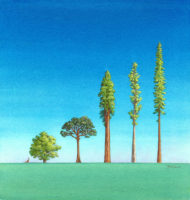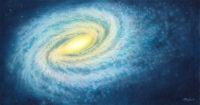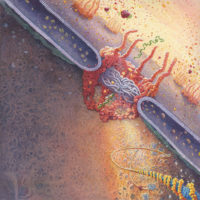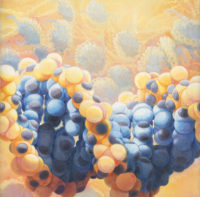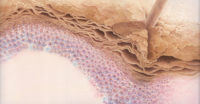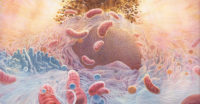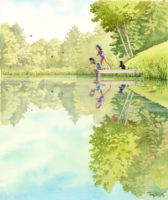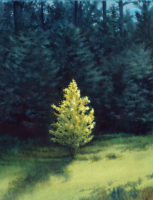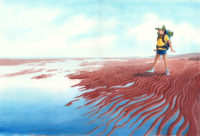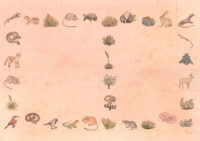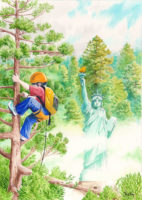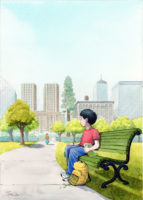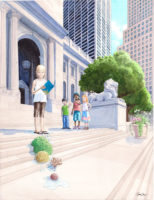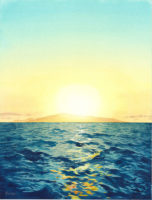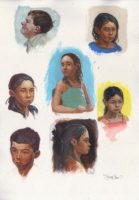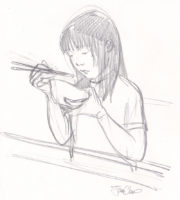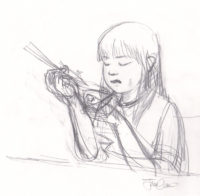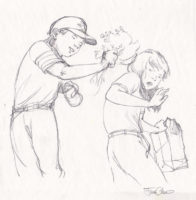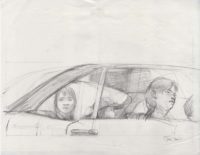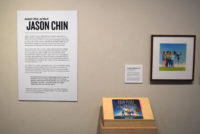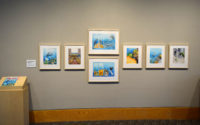Jason Chin: Your Place in the Universe
See Your Place in the Universe, on exhibit February 8 through May 10 with our friends at the
National Center for Children’s Illustrated Literature, in Abilene, Texas.
Also see works by Jason that are currently at the gallery here.
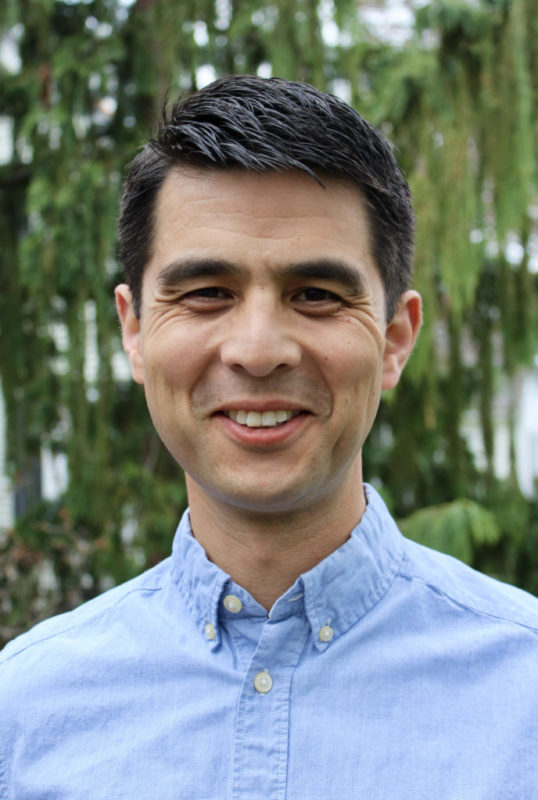
Meet the Artist: Jason Chin
Jason Chin (American, born 1978) writes and illustrates award-winning children’s books, including Redwoods, Grand Canyon, and Your Place in the Universe. His paintings in Watercress, alongside storytelling by Andrea Wang, garnered a 2022 Caldecott Medal. With a love for scientific wonders, he has illuminated the mysteries of coral reefs, redwood trees, the Galapagos Islands, gravity, and the elemental particles that make us who we are.
As a young teenager, Chin met famed author and artist Trina Schart Hyman (Little Red Riding Hood, Saint George and the Dragon) in his hometown of Lyme, New Hampshire, where she often visited his elementary school. Her early influence led him to pursue a degree in illustration from Syracuse University. Upon graduating, he found camaraderie among other children’s book enthusiasts while working at New York City’s historic Books of Wonder. After illustrating several books by other authors, he eventually published one of his own, Redwoods, in 2007.
Chin follows his curiosities to the depths of the earth and the farthest reaches of our galaxy. He invited readers to share in his excitement for the natural world with intricate layers of inquiry: How small am I compared to a giraffe, and how tall am I compared to a gluon? How old is the Grand Canyon, and how long is the Belize barrier reef?
“Trina Schart Hyman became so fully engaged with the stories she illustrated, it was as if she was living in them. I try to copy her approach, imagining myself as the character and in the place that I’m painting,” says Chin. “I hope that readers can imagine themselves in the book when they read it.”
Delightfully, we find ourselves swept into ocean waves, hiking cliffs about ancient trails, and untangling the enigma of DNA as Jason Chin’s questions become our own wild adventures.

Your Place in the Universe, 2020
by Jason Chin, author and illustrator
Watercolor on Fabriano paper
Courtesy of R. Michelson Galleries and the artist
Through the eyes of four eight-year-olds, we discover: What is the tallest thing? The children are five times as tall as this book and half as tall as an ostrich. An ostrich is half as tall as a giraffe and only one twentieth the size of a California redwood. Yet even the Eiffel Tower, Empire State Building, and Mount Everest seem small compared to the width of our planet.
The distances Chin illustrates span not only physical length but also time, because we measure astronomical scale by how long it takes a beam of light to travel from the sun. The farthest we can see is around 13 billion light-years away, and the universe is still changing and growing, just like us.
11.5×11 in
12×11 in
11.5×11 in
11.5×11 in
12×21 in
12×21 in
12×21 in
9×15 in
The Universe in You: A Microscopic Journey, 2022
by Jason Chin, author and illustrator
Watercolor on Arches paper
Courtesy of R. Michelson Galleries and the artist
Now that we’ve discovered the tallest and farthest thing, we wonder: What is the tiniest thing? With intricate watercolor paintings, Chin introduces the reader into the realm of the very small. The journey begins with the smallest bird in the United States, moves next to the smallest butterfly, and then to the smallest bee. Eventually we reach the building blocks of all physical matter: elementary particles. We find that, amazingly, we are made of the same stuff as everything in the universe — and yet we are all unique.
The Universe in You depicts objects so small that Jason had to make design decisions about how to represent them because they operate as both waves and particles, which the human brain cannot visualize.
11×11 in
11×11 in
11×11 in
11×21 in
11×21 in
11×21 in
11×21 in
Gravity, 2014
by Jason Chin, author and illustrator
Gouache on Fabriano paper
Courtesy of R. Michelson Galleries and the artist
Have you ever felt an idea drop down from the sky? One night after an unusual bout with allergies, Chin went to bed early and suddenly envisioned a book falling out of a book. His wife Deirdre Gill, also a children’s book illustrator, said, “That sounds like a book about gravity.”
Chin made models out of paper clay and hung them up in his garage to understand the effects of light and shadow on tumbling forms. He drew inspiration for the astronaut from Buzz Lightyear, and the boy in the story is based on his father’s best friend, John Green, who loves NASA and space exploration.
After all the paintings were done, Jason added details to the book-within-the-book, making each page match the illustrations in Gravity itself. He even included the tiniest details! Look at the close-up image in the center of this section. Hand-lettered words from Jason Chin’s biography peek out between the pages. Which of his other books do you see mentioned?
10×26 in
11×26 in
10×25.25 in
10×25.25 in
10×13 in
10×13 in
Water is Water: A Book About the Water Cycle, 2015
by Miranda Paul, author
Watercolor on Fabriano paper
Courtesy of R. Michelson Galleries and the artist

Personal “Easter eggs” can be seen throughout Jason Chin’s books. The seasons in Water Is Water find inspiration from Trina Schart Hyman’s Caldecott-winning book A Child’s Calendar. The second image in this section (showing two children with a fishing net) references one of hers, pictured right.
Chin grew up in Lyme, New Hampshire, attending Lyme Elementary School, where Trina Schart Hyman frequently presented her work and first inspired him to become an illustrator. Can you find the Lyme Lions mascot in the images on this wall?
Other personal details include one of his son’s favorite subjects — trains — and a baby garter snake that Jason’s grade school teacher once welcomed into the classroom. Look closely… do you spot them?
14.5×12 in
12×10.5 in
12×10 in
13×10.25 in
12×19 in
11.5×18 in
11.5×18 in
11.5×18 in
11.5×18.5 in
Grand Canyon, 2017
2017 Caldecott Honor | 2017 Orbis Pictus Award | 2017 Sibert Honor
by Jason Chin, author and illustrator
Watercolor on Fabriano paper
Courtesy of R. Michelson Galleries and the artist
After a night camping at the bottom of the Grand Canyon, a young hiker walks with her father up through its winding trails, finding fossils that become time-traveling windows into ancient environments. She uncovers all kinds of prehistoric flora and fauna, including wings from huge dragonflies that soared the skies 280 million years ago at the end of the Paleozoic Era.
It took three years to research and write Grand Canyon. Jason Chin looked at the paintings of Swedish-American artist Gunnar Widforss (1879–1934) for inspiration and hiked over 25 miles to study the locations featured in the book. A panoramic view, seen at the end of this section, mimics the feeling of surprise and awe that he felt upon walking up to the canyon for the first time.
14×21.5 in
13.5×11 in
12.5×10 in
12×6.5 in
14×20.5 in
14×20 in
13.5×20 in
10×9.5 in
13.25×20.25 in
12.25×9.75 in
13.5×20 in
14.5×20 in
14×20 in
14.25×21 in
13.5×20 in
Redwoods, 2009
by Jason Chin, author and illustrator
Watercolor on Fabriano paper
Courtesy of R. Michelson Galleries and the artist
In October 2006, Jason Chin read an article about the discovery of the world’s tallest tree, a 379.1-foot-tall redwood named Hyperion, while riding on the New York City subway. The story captured his imagination and inspired him to create Redwoods, his first book as both author and illustrator.
Told from the perspective of a young boy who finds a book about these towering trees in a subway station, Redwoods becomes an adventurous portal for the boy and reader to explore a redwood forest.
12×8.5 in
12×8.5 in
12×8.5 in
12×8.5 in
12×8.5 in
12×16 in
Coral Reefs: A Journey Through an Aquatic World Full of Wonder, 2011
by Jason Chin, author and illustrator
Watercolor on Fabriano paper
Courtesy of R. Michelson Galleries and the artist
A little girl walks into the New York Public Library at Bryant Park and tilts a book off of the shelf. Suddenly, mounds of coral surround her! With the rush of a wave, she dives deep into learning, exploring aquatic cities that teem with colorful life.
13×10 in
13×10 in
13×10 in
13×10 in
13×10 in
13×19 in
12×18 in
Island: A Story of the Galápagos, 2012
by Jason Chin, author and illustrator
Mixed media on Fabriano paper
Courtesy of R. Michelson Galleries and the artist

Why do certain species exist in one place but not another?
The story of Islands begins with a volcano eruption that gave birth to abundant life millions of years ago. Jason Chin guides us through stages of the islands’ history — from the very first mangrove tree to the many species that live there today — showing how animals and plants adapted over time. Studying the Galápagos changed how the scientist Charles Darwin thought about the world and inspired his theory of evolution by natural selection.
Compare and contrast the finch beaks in the third image of this section. What differences do you notice? Can you guess why these generations of birds slowly changed?
Part of the inspiration for this book came from William Steig’s Rotten Island, book pictured right.
13×10 in
13×10 in
11.5×8.5 in
9×8.5 in
13×19 in
13×19 in
11.5×8.5 in
Watercress, 2021
2022 Caldecott Medal | 2022 Newbery Honor
2022 Asian/Pacific American Award for Literature
by Andrea Wang, author
Watercolor and pastel on Saunders Waterford paper
Courtesy of R. Michelson Galleries and the artist
With evocative language and crisp diction, author Andrea Wang tenderly remembers her life as a child of Chinese immigrants in rural Ohio. Her mother spies watercress in a ditch on the side of the road, and the family jumps out to collect it for dinner. This leafy vegetable becomes a metaphor for generational loss, the confusion of shame, our need to belong, and the gift of savoring our stories.
As the child of a Chinese father and American mother, Jason Chin pulled from his own understanding of Chinese-American households to create the artwork for Watercress. He painted with both Chinese and western brushes, carefully picked cultural clues for the household (like Pyrex dishes), and replicated the car shown in one of Wang’s family photographs — a 1967 Pontiac Tempest.
Look closely at the license plate and you’ll find another Easter egg: “AW” for Andrea Wang, and the lucky sequence “456,” a nod to Chin’s childhood phone number.
10×23 in
10×23.25 in
10×23.25 in
10×23.25 in
10×23.25 in
10×14 in
10×14 in
10×14 in
10.25×23.75 in
9×22 in
9×22 in
Character Studies
Watercress, 2021
The Universe in You, 2022
Watercolor and graphite on paper
Courtesy of R. Michelson Galleries and the artist
To work out details for his characters (such as anatomy, facial expressions, hairstyle, clothing, and color palette) Jason Chin creates character studies in preparation for final paintings. Sketches also enable him to think through the composition of each artwork and decide where narrative elements are placed within each image.
Notice the two dinner table sketches from Watercress. In one version, the father has a drinking glass, and in another, only the children have drinking glasses. Having grown up in a Chinese-American household, Jason felt it was most accurate to depict the children with water glasses — a western custom — while the parents drink from bowls — a traditional Chinese custom.
12.5×9 in
The Universe in You
11.25×7.5 in
The Universe in You
9×8 in
The Universe in You
8.5×11 in
The Universe in You
8×10.5 in
The Universe in You
8×9 in
Watercress
6×11 in
Watercress
9×7.75 in
Watercress
7.25×8 in
Watercress
7.5×7.5 in
Watercress
5×13 in
Watercress
See the Show at NCCIL
“The NCCIL exhibits, tour, collects, preserves and promotes original art from the finest children’s literature. Our vision is to inspire and empower children to read and be creative. Through our programming and outreach, the NCCIL actively promotes children’s literacy, both art and reading, in the Abilene community and beyond.”
Learn more about the National Center for Children’s Literacy and their programs here.



